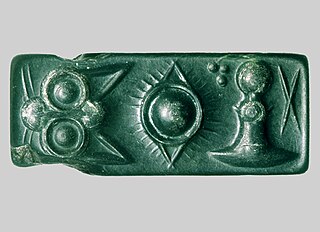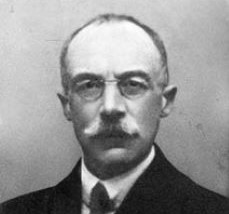Related Research Articles

Etruscan was the language of the Etruscan civilization in the ancient region of Etruria, in Etruria Padana and Etruria Campana in what is now Italy. Etruscan influenced Latin but was eventually completely superseded by it. The Etruscans left around 13,000 inscriptions that have been found so far, only a small minority of which are of significant length; some bilingual inscriptions with texts also in Latin, Greek, or Phoenician; and a few dozen purported loanwords. Attested from 700 BC to AD 50, the relation of Etruscan to other languages has been a source of long-running speculation and study, with it mostly being referred to as one of the Tyrsenian languages, at times as an isolate and a number of other less well-known theories.

The Tabula Cortonensis is a 2200-year-old, inscribed bronze tablet in the Etruscan language, discovered in Cortona, Italy. It may record for posterity the details of an ancient legal transaction which took place in the ancient Tuscan city of Cortona, known to the Etruscans as Curtun. Its 40-line, 200-word, two-sided inscription is the third longest inscription found in the Etruscan language, after the Liber Linteus Zagrabiensis and the Tabula Capuana, and the longest discovered in the 20th century.

Cretan hieroglyphs are a hieroglyphic writing system used in early Bronze Age Crete, during the Minoan era. They predate Linear A by about a century, but the two writing systems continued to be used in parallel for most of their history. As of 2024, they are undeciphered.
The Cypro-Minoan syllabary (CM), more commonly called the Cypro-Minoan Script, is an undeciphered syllabary used on the island of Cyprus and at its trading partners during the late Bronze Age and early Iron Age. The term "Cypro-Minoan" was coined by Arthur Evans in 1909 based on its visual similarity to Linear A on Minoan Crete, from which CM is thought to be derived. Approximately 250 objects—such as clay balls, cylinders, and tablets which bear Cypro-Minoan inscriptions, have been found. Discoveries have been made at various sites around Cyprus, as well as in the ancient city of Ugarit on the Syrian coast. It is thought to be somehow related to the later Cypriot syllabary.

Numerius is a Latin praenomen, or personal name, usually abbreviated N. The name was never especially common, but was used throughout the period of the Roman Republic, and into imperial times. The feminine form is Numeria. The praenomen also gave rise to the patronymic gens Numeria.
Lucius Aebutius Helva was a politician and general of the Roman Republic. He was consul in 463 BC with Publius Servilius Priscus, but died of the plague during his term.
The gens Ancharia, occasionally written Ancaria, was a plebeian family at ancient Rome. The first of the gens to achieve prominence was Quintus Ancharius, a senator early in the first century BC.

The gens Aufidia was a plebeian family at ancient Rome, which occurs in history from the later part of the Republic to the third century AD. The first member to obtain the consulship was Gnaeus Aufidius Orestes, in 71 BC.
Örjan Wikander is a Swedish classical archaeologist and ancient historian. His main interests are ancient water technology, ancient roof terracottas, Roman social history, Etruscan archaeology and epigraphy.
The gens Coruncania was a plebeian family at ancient Rome. The first of the family to come to prominence was Tiberius Coruncanius, a novus homo who became consul in 280 BC, and dictator in 246.

Edmond Maximilien Berthout van Berchem commonly known as Max van Berchem, was a Swiss philologist, epigraphist and historian. Best known as the founder of Arabic epigraphy in the Western world, he was the mastermind of the Corpus Inscriptionum Arabicarum, an international collaboration among eminent scholars to collect and publish Arabic inscriptions from the Middle East.
Gaston Wiet was a 20th-century French orientalist.
The gens Octavena was an obscure plebeian family at Rome. The gens is known primarily from a single individual, the jurist Octavenus, cited by a number of later authorities, although several other Octaveni are known from inscriptions.
The gens Ofilia, also spelled Ofillia and Ofellia, was a plebeian family at ancient Rome. Its most illustrious member was doubtless the jurist Aulus Ofilius, a friend of both Caesar and Cicero.

The gens Persia was a minor plebeian family at ancient Rome. Members of this gens are first mentioned during the Second Punic War, but they only occasionally occur in history. The most illustrious of the family was the satirist Aulus Persius Flaccus, who lived during the middle part of the first century.
The gens Sabucia was a minor plebeian family at ancient Rome. Members of this gens are first mentioned in imperial times. The most illustrious of the family was Gaius Sabucius Major Caecilianus, who obtained the consulship in AD 186. Other Sabucii are known from inscriptions.
The gens Scandilia, also written Scantilia, was an obscure plebeian family of equestrian rank at ancient Rome. Few members of this gens are mentioned by ancient writers, but a number are known from inscriptions.

Phoenician metal bowls are approximately 90 decorative bowls made in the 7th–8th centuries BCE from bronze, silver and gold, found since the mid-19th century in the Eastern Mediterranean and Iraq. They were historically attributed to the Phoenicians, but are today considered to have been made by a broader group of Levantine peoples.
The gens Tigidia was an obscure plebeian family at ancient Rome. The only member of this gens to appear in history was Sextus Tigidius Perennis, prefect of the praetorian guard early in the reign of Commodus, but others are known from inscriptions.

The Sarcophagus of Laris Pulenas, also known as "The Magistrate," dates from the 2nd or 3rd century BCE. It was discovered in Tarquinia in Italy and is now in the Tarquinia National Museum.
References
- Pauli C. et al., Corpus Inscriptionum Etruscarum, (Lipsia 1919–21)
